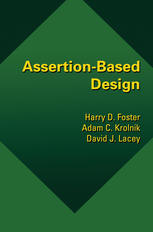

Most ebook files are in PDF format, so you can easily read them using various software such as Foxit Reader or directly on the Google Chrome browser.
Some ebook files are released by publishers in other formats such as .awz, .mobi, .epub, .fb2, etc. You may need to install specific software to read these formats on mobile/PC, such as Calibre.
Please read the tutorial at this link: https://ebookbell.com/faq
We offer FREE conversion to the popular formats you request; however, this may take some time. Therefore, right after payment, please email us, and we will try to provide the service as quickly as possible.
For some exceptional file formats or broken links (if any), please refrain from opening any disputes. Instead, email us first, and we will try to assist within a maximum of 6 hours.
EbookBell Team

4.0
56 reviewsThere is much excitement in the design and verification community about assertion-based design. The question is, who should study assertion-based design? The emphatic answer is, both design and verification engineers. What may be unintuitive to many design engineers is that adding assertions to RTL code will actually reduce design time, while better documenting design intent. Every design engineer should read this book! Design engineers that add assertions to their design will not only reduce the time needed to complete a design, they will also reduce the number of interruptions from verification engineers to answer questions about design intent and to address verification suite mistakes. With design assertions in place, the majority of the interruptions from verification engineers will be related to actual design problems and the error feedback provided will be more useful to help identify design flaws. A design engineer who does not add assertions to the RTL code will spend more time with verification engineers explaining the design functionality and intended interface requirements, knowledge that is needed by the verification engineer to complete the job of testing the design.